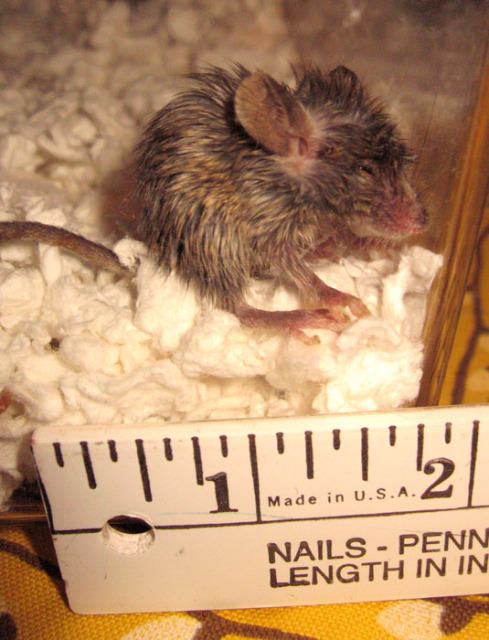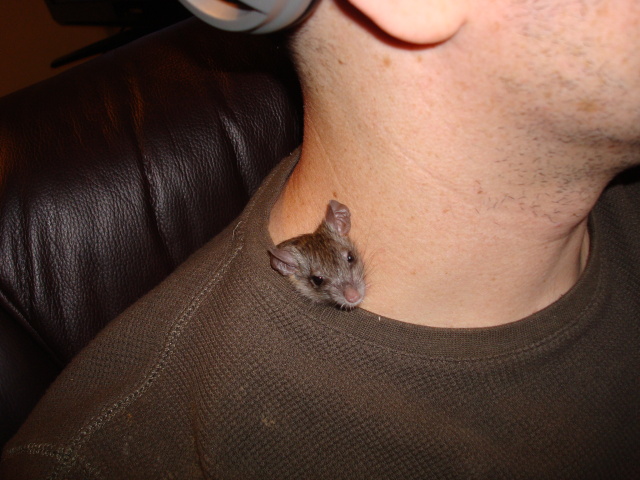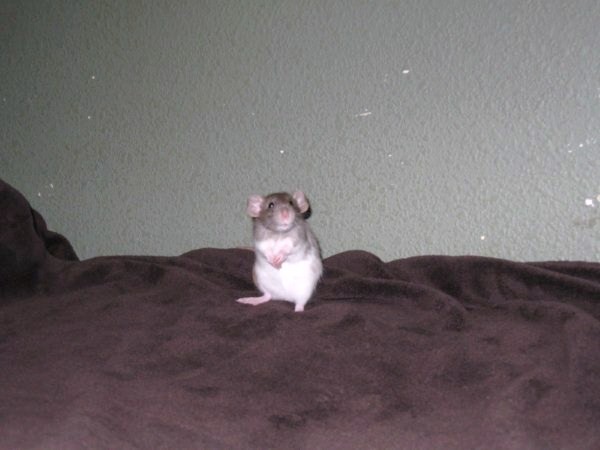QuestionI have two amazing rats. A female and a male. My female will be 3 mos at the end of the month and my male is a month old. I have two homes so my rats each have two cages. two small cages for the home I at the least and two large ones for the one I'm at the most. I put both of my babies in kritter balls for excerise. My female large cage is a 2 floor with a small 3rd platform. The bottom floor is flat and the second is wired.I use pine shavings as bedding (My father works for a lumber company so its free. I take out all the knots and any sharp peices). My female a few weeks ago saddly took a long tumble down the stairs she limped for a few days but there was no blood of any kind and my breeder and friend said if anything was broken there be alot of blood. She is no longer limping. However, as I took her out to play I noticed one of her toes on the very same leg is red and swollen with no open bleeding. Is it something to do with her fall or a sign of bumblefoot?
Now for my little boy. He is a big tub of lard (very squishy). When I put him in his ball he never moves. I started him earlier then my female (who still love her ball)and tried gentlily showing him that it moves but still nothing. His large cage doesn't have a wheel but his second does he doesn't use it. I keep two cat ball toys in all 4 cages and a wood block as well. What can I do to him stimulated and fit?
Are there any other things you feel I should be doing for My sweetlings?
Thank You Much
AnswerHello,
since your female fell down she may have a little swollen leg for a little while from applying pressure on it. Your chubby rat just seems to want to be lazy and laze around which I have seen in a quite a few rats which is just the personality of the rats. I like chubby rats. They are cute and squishy lol.
Also, the only thing I would do different is to not to use pine bedding. Pine and cedar bedding has been known to cause liver and lung disease as well as fur loss and respiratory problems in small animals.

 Matted Fur Around Eye
Question
Tinkerbell the Chinchi
Hello,
&nb
Matted Fur Around Eye
Question
Tinkerbell the Chinchi
Hello,
&nb
 Rattie question
QuestionHey there:) I recently got two five week old ma
Rattie question
QuestionHey there:) I recently got two five week old ma
 Question about taking care of a young mouse found in a live trap
Questioncandaules
QUESTION: Hallo! The liv
Question about taking care of a young mouse found in a live trap
Questioncandaules
QUESTION: Hallo! The liv
 wild rat companion?
Questionroof rat
QUESTION: I have been raising a
wild rat companion?
Questionroof rat
QUESTION: I have been raising a
 Pet Rats (Temperary itchy skin)
Question
Casey
Hi Dawn,
Pet Rats (Temperary itchy skin)
Question
Casey
Hi Dawn,